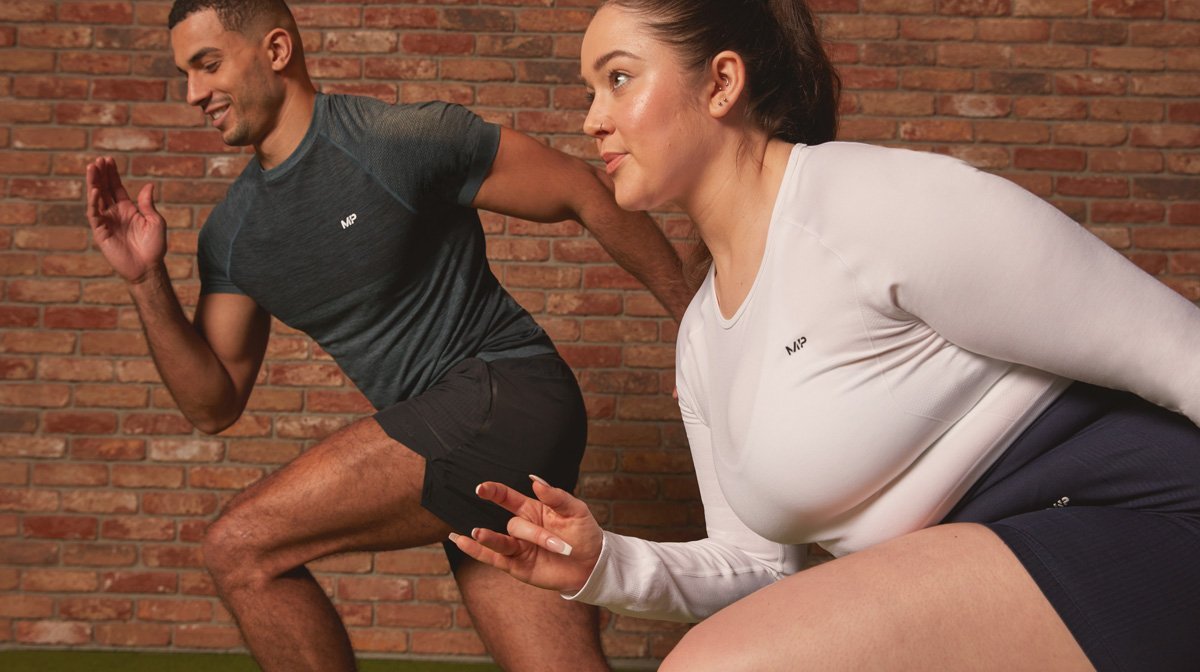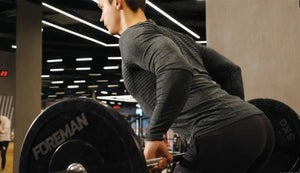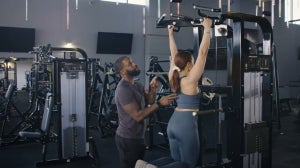
Matt Morsia is always taking on the most intense fitness tests. In this latest installment of “Matt pushes his body to the limit”, he attempts a Premier League footballer’s medical test.
If you’re new around here, Matt is not a footballer. In fact, the last time he played football — five months ago — was when he tore his achilles tendon. He’s not kicked a ball since, but Matt loves a challenge. And considering Matt hasn’t done any cardio in that time, that’s exactly what this will be.
For context, professional footballers undertake a series of medical tests when signing for a new club. This is to make sure there are no underlying health issues that the buying club needs to be aware of before purchasing the player.
The test assesses five key areas:
- Range of movement
- Rate of force development
- Peak force
- VO2 max testing
- Lactase testing for endurance
Strength tests
First up, the strength tests. Matt was checked over to see if there were any visual abnormalities across his muscles from one side of his body to the other. The reason for this is players with abnormalities may be predisposed to injury. Matt had a few imbalances — most likely from previous injuries and where he might’ve overcompensated for these injuries. One in his back, likely from his triple-jump days, and the other in his hip flexor, either from triple-jumping or powerlifting.
Then they took a look at Matt’s strength. We know he’s strong; we’ve seen him deadlift the rough weight of a dolphin, so we’re not worried about his performance on this test. In particular, they broke down his strength into peak force and rate of force production using a handheld dynamometer across two movements: leg flexion and leg extension.
While Matt’s rate of force production seemed to be pretty equal on both sides, his peak force was stronger on his left. But the assessor didn't seem particularly worried about it. And Matt had his sights set on beating records.
Matt headed into the gym and to a specialist squat machine that looks at functional movement patterns and the ability to generate force. After hearing that the record on that very machine was a peak power of 3,000, Matt’s competitive streak took over.
Matt’s first try of 2,896 left him tantalizingly close to the record. Luckily his next attempt surpassed it with a peak power of 3,104. And then he topped it once again, taking it up to 3,240. The smug look on his face said it all. It’s a shame he was knocked right back down to earth hearing that someone once managed 5,000 but on a different machine.
Endurance tests
The endurance aspect of the test looked at lactate testing and VO2 max. This helps the assessors to understand how quickly oxygen is getting around the body and is a great indicator of someone's cardio ability. And Matt was dreading it.
Matt waited in anticipation as they took their metrics: heart rate, blood pressure, weight, age, height … you know the drill. He then headed over to the watt bike, but not before requesting a comfortable bike seat. Who can blame him? You might as well be as comfortable as possible.
The test
Quick warm-up (10 minutes of easy pedaling on the bike).
For the lactate test, stages of cycling where the wattage increased by 20 watts every four minutes.
He also had to endure finger pricking to monitor his lactate levels
Once the lactate curve had been established, they stopped taking lactate samples and focused on the VO2 max by increasing the wattage by 20 watts every minute.
They also monitored how easy he was finding the experience throughout.
After a lot of sweat, struggle, and what looked like tears, the results were in. Matt scored a VO2 score of 46.6ml/kg/minute, which indicated that Matt’s cardio fitness was between the ranges of good and excellent. After not completing any cardio for five months, that’s pretty impressive.
For a bit of context, professional footballers’ VO2 max averages between 60-80ml/kg/minute. It’s also worth noting that the results are heavily affected by the weight of the participant; if Matt weighed the same as a footballer, he’d likely be hitting similar levels.
It was what the assessor described as “a perfect test”, sending Matt’s ego through the roof.
Take home message
The results showed that Matt could probably be a Premier League footballer, in terms of fitness and strength. But skill is another matter entirely. And since he might’ve been cursed by the sport after his injury, we’re not sure he’ll be hitting it up in the Premier League any time soon. But, never say never.
Enjoy this article?
FIND MORE HERE:

Inside Mr. Olympia Training & Meal Prep
Taking meat, rice, and veg to the next level.

'This Workout Is Highly Demanding': PT Reviews The 200 Club
Do you think you're strong enough for this new challenge?

World’s Strongest Brothers VS World’s Strongest Vegan
Plant power faces the ultimate test…

Related Articles








